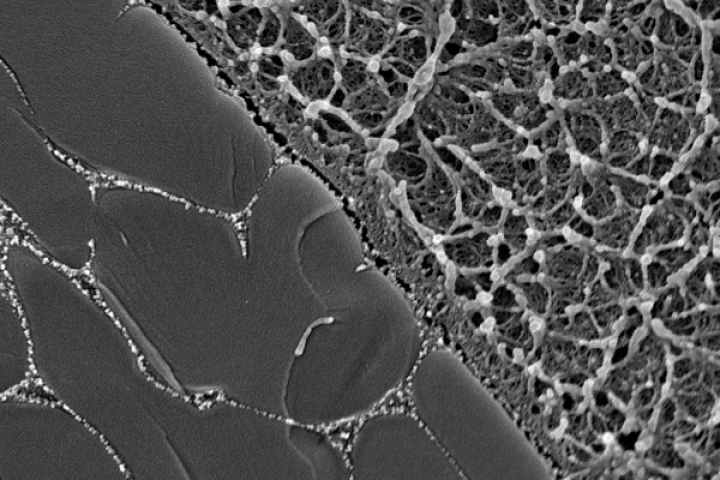Cartilage
-
Tennis players are susceptible to wrist cartilage injuries, which may not even present any symptoms at first. A van-based MRI system was designed with that in mind, as it can spot such injuries right at the tennis court, before they become serious.
-
By stimulating cells to reproduce, electricity has already been shown to help heal soft tissue injuries. Now, an electricity-producing implantable material likewise appears to boost the regrowth of cartilage in compromised joints.
-
Paleontologists have isolated cartilage cells from an exceptionally well-preserved dinosaur fossil. They still contain traces of biomolecules, and the scientists were even able to tell which stage of the natural cycle specific cells were in at death.
-
A new, dissolving, textile-based stem cell implant has reduced pain and restored hip joint function to dogs with moderate osteoarthritis, in what researchers say could be a first step toward less invasive joint resurfacing in dogs as well as humans.
-
The University of Alberta has developed a new technique for 3D printing cartilage in custom shapes. This can be used to repair the noses of skin cancer patients, saving them the trouble of having cartilage samples taken from other parts of the body.
-
As anyone with arthritis will know, cartilage plays a vital role in allowing our joints to move freely. Scientists have now replicated its qualities in a synthetic self-lubricating material, that only needs occasional infusions of water.
-
Once it's been injured, the protective cartilage in our knees and other joints heals very slowly – if at all. A new injectable gel, however, could both reinforce the tissue after it's been damaged, and encourage new cartilage to grow over top of it.
-
Although anti-inflammatory drugs can be used to tackle conditions like osteoarthritis, there are downsides to our current methods of delivery. New research at the Washington University School of Medicine in St. Louis could address these shortcomings.
-
Osteoarthritis is a painful and fairly common condition that’s hard to slow, so treatment options are mostly limited to reducing pain. But a new study in mice has now found that nanotherapeutic injections into the knee can slow cartilage degradation.
-
Human knees are notoriously vulnerable to injury or wearing out with age, often culminating in the need for surgery. Now researchers have created new hybrid bioinks that can be used to 3D print structures to replace damaged cartilage in the knee.
-
Like most machines, the human body tends to wear out faster at the points of articulation, where decades of stress are focused. Now, researchers at Stanford have found a way to induce cartilage tissue to regenerate in joints by tweaking the stem cells there.
-
Cartilage plays a crucial role in your knees, but unfortunately once it’s damaged or worn out it’s hard to repair. Now, researchers at Duke University have created a new hydrogel that’s strong enough to withstand forces as well as natural cartilage.
Load More











